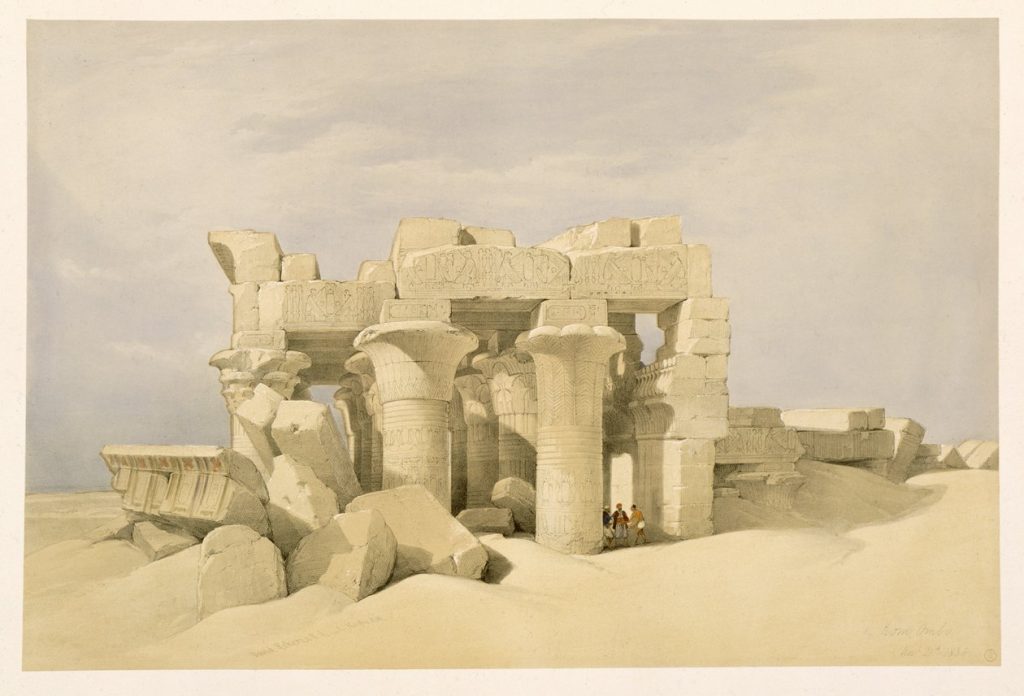Architectural study and restitution of the Greco-Roman temple of Sobek and Haroeris in Kom Ombo (Upper Egypt)
Aurélie Terrier, bourse FNS-AMBIZIONE, EPFL ENAC IA LAPIS

The Kom Ombo Temple is located on the eastern bank of the Nile between Edfu and Aswan in Upper Egypt. The temple, dedicated to the gods Sobek and Harwer and their associated deities, is located on a plateau bordered by two arms of the Nile, which were responsible for the major collapse of the sanctuary buildings.
The temple appears to have been built in several phases from Ptolemy VI Philometor (186-145 BC) to the Roman period (30 BC -391 AD). The last decoration dates from the reign of Trajan (53-117 AD). The temple of Kom Ombo is the only one, among the five largest Greco-Roman temples (332 BC – 251 AD) built on Egyptian soil, to not have benefited from any modern architectural and archaeological study.
The study of this temple takes advantage of the fact that its structure was partially damaged, which allows to access information on construction techniques that we would otherwise not have been able to observe. It is thus part of a series of studies on the construction of cult spaces in Greco-Ro- man Egypt that have been carried out in recent years by several researchers. The analyses carried out on other much better preserved temples will allow to propose restitutions of lost structures, while this research will provide a better understanding of the techniques and methods of construction of this category of building. Thanks to the interoperability of the data, as well as comparative work, we will be able to propose a 3D restitution and an augmented reality module encompassing several levels of reading within the framework of exploiting and sharing the data with the epigraphic team.